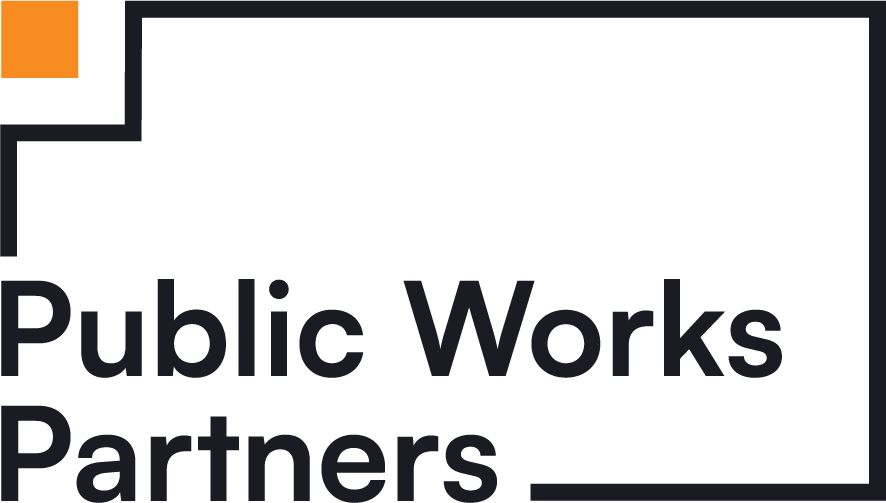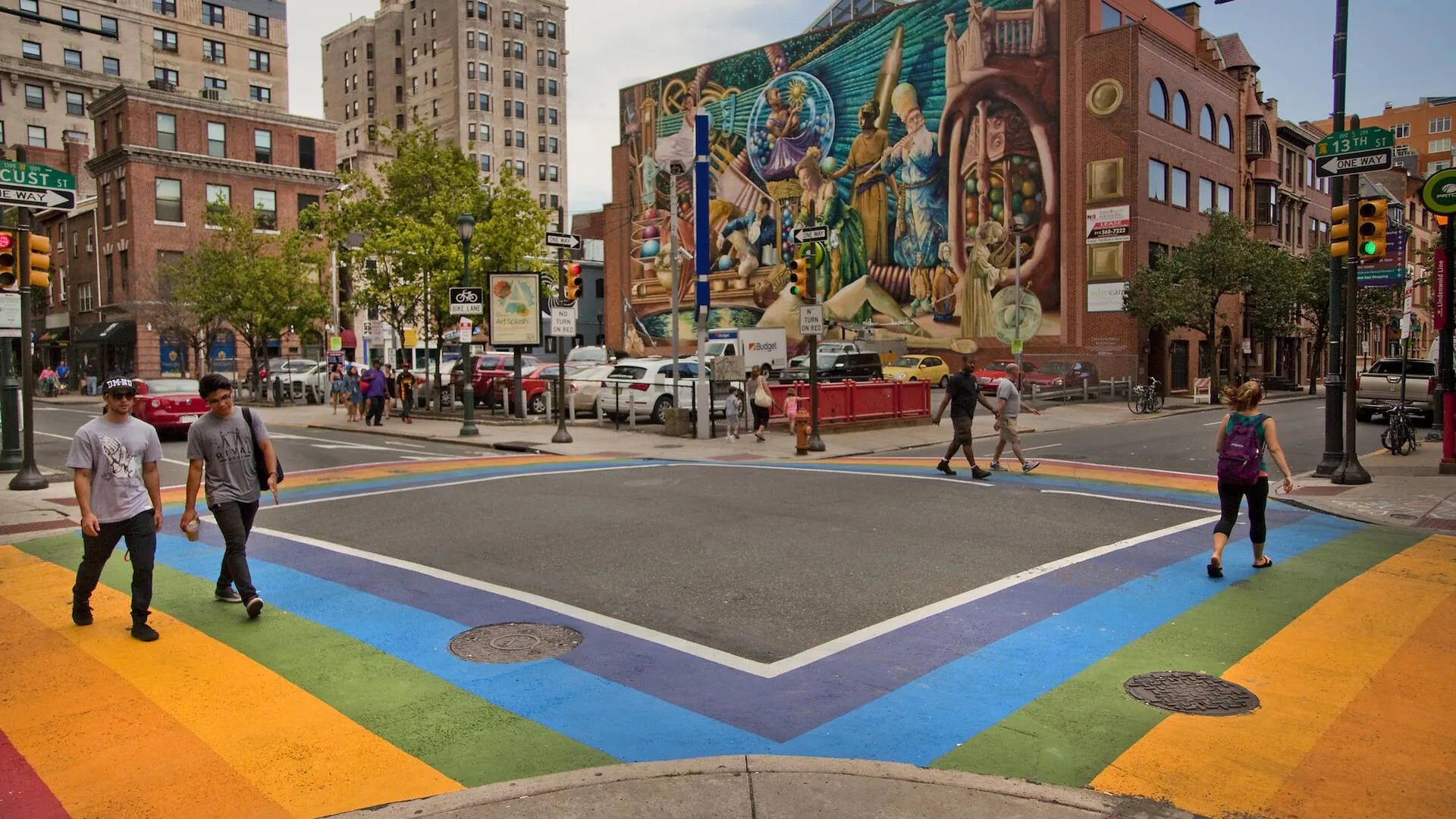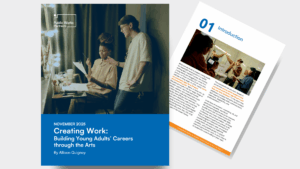By: Selina “S” Heinen (They/Them)
LGBTQ+ protections are being eroded by transparent fearmongering (Murib, 2025). That is why now is extremely important for urban planners and public servants to support communities that make up the rainbow. To do so, planners must take an informed approach to account for the diverse needs of neighborhoods. How to support a layered community like the LGBTQ+ is through cultural preservation and protection, dismantling heteronormative biases in the built environment, and building consideration into every level of governance. Diverse, equitable, and inclusive neighborhoods experience the benefits through communal pride/responsibility and economic development (Fiveable, 2024). Therefore, decision-makers should promote these practices with every project.
Key Takeaways
- Layers of historical oppression of LGBTQ+ lives caused a deficit of modern queer spaces and the destruction of formerly sacred sites to the community. Local, state, and federal governments are duty-bound to protect those remaining.
LGBTQ+ equality begins with dismantling gender boundaries. Simple gestures, like gender-neutral bathrooms, alleviate heteronormative burdens, which benefits everyone, not only transgender people.
Incorporating LGBTQ+ voices at every urban planning stage protects “gayborhoods,” supports LGBTQ+ economic development, and sooner identifies potentially harmful policies that may go unnoticed by non-LGBTQ+ people.
The LGBTQ+ Community is Not A Monolith
The LGBTQ+ acronym (Lesbian, Gay, Bisexual, Transgender, Queer, and more) in and of itself showcases the intersection of identities. These nuances require adaptive planning processes that rely on stakeholder voices–not assumptions on what they would accept as accommodating–because what works for one letter may not work for another, or even someone of a different race or background.
Upon “coming out,” many LGBTQ+ people feel pressured to look or behave a certain way to fit in with their new community. But that looks different across genders and cultures. Pride parades, while an impactful element of placemaking, are centered around white Euro-American queerness (Logie, et. al., 2014). They are not representative of the entire rainbow.
Transgender men are often excluded from gay male spaces, and people of color from predominantly white spaces. Due to the history of violence against women, lesbians and femme-presenting people might not feel safe in a masculine space, particularly because the community tends to congregate around nightclubs. The more -isms and -phobias stacked against someone, the harder it is to feel accepted. Black transgender women endure the intersection of three discriminated identities (Smith, 2020). This is why stakeholder engagement and collaboration are invaluable methods to help planners navigate tangled histories and cultures.
A Persistence of Deep-Rooted Trauma
The community is still, and may always be, recovering from a not-too-distant history of discrimination and oppression. From the 1950s to the 1970s, queer people had a choice– be labelled mentally ill and “accept” treatment, or be labeled a “sexual psychopath” and face criminal charges (Woods, 2017). To this day, queer youth are sent to gay conversion therapy and camps, although many states and cities have outlawed the practice (HRC Foundation, n.d.).
America lost a generation of LGBTQ+ people to the AIDS epidemic. In the 1980s, the federal government blatantly ignored the LGBTQ+ community and did not provide aid for five years. For his entire first term, President Raegen disregarded the disease–“The Reagan administration’s response was not only ineffective but also excruciatingly silent for the first five years of the epidemic. Without a substantial federal response, this obscure infection evolved into an epidemic that erased a generation of Americans in the span of half a decade,” (Ortiz, 2023). Once the United States Government acknowledged the disease and supplied resources for a cure, the mortality rate dropped. Now, people living with HIV/AIDS can live a full life (GILEAD, n.d.).
The Fight For Equality Isn’t Over
Today, the LGBTQ+ community is being erased once again. In February of 2025, the National Park Service removed the word “transgender” from its website and replaced “LGBT” with “LGB.” “This decision to erase the word ‘transgender’ is a deliberate attempt to erase our history and marginalize the very people who paved the way for many victories we have achieved as a community,” said the Stonewall Inn and the Stonewall Inn Gives Back Initiative in a joint statement. Stonewall and the resulting movement were stewarded by transgender women of color, like Marsha P. Johnson, which makes the federal erasure even more unjust. Then, in July of 2025, “bisexual” was erased and replaced with “gays and lesbians.” Legislative censorship of identity and restricted LGBTQ+ rights are why now is as important as ever to preserve the community’s history and pride. Leaders must go out of their way to ensure every identity is welcome. The best way to do this is by protecting where the community feels safe or establishing new spaces.
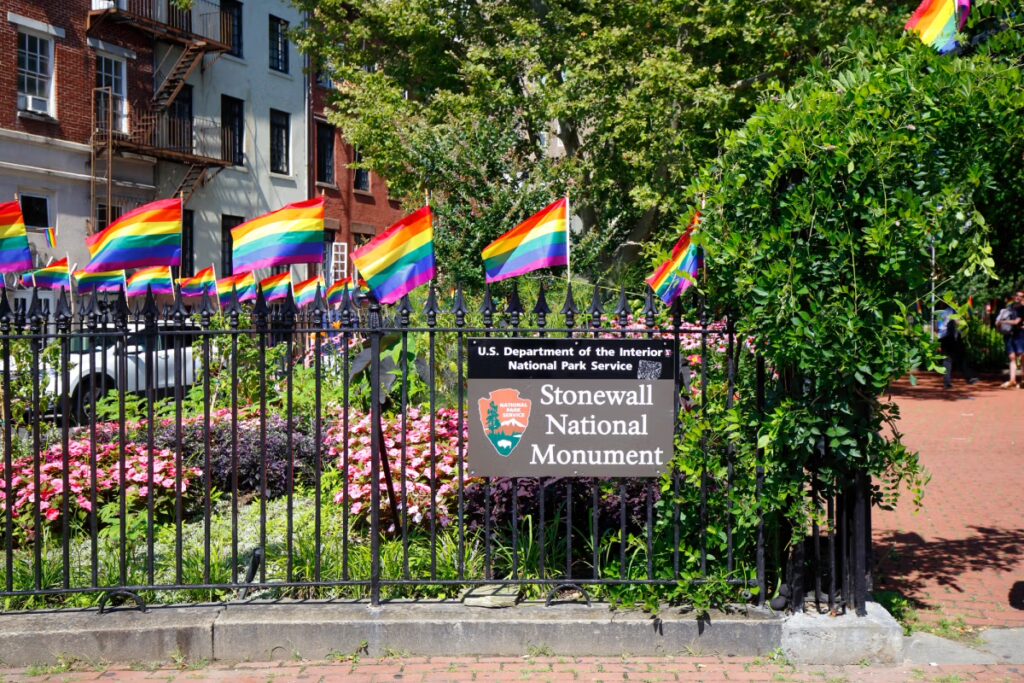
Protecting Sacred Spaces Through Planning and Placemaking
The LGBTQ+ community is stigmatized for disrupting neighborhoods through gentrification and allegedly rowdy behavior. However, if community needs are accounted for, the pop-up of a queer space won’t be seen as a nuisance for existing residents. It all comes down to planning and placemaking. While gay bars are crucial and sacred, one business cannot possibly accommodate all identities and their needs. Bars/nightclubs are private spaces, free to exclude anyone the proprietor sees fit. This is why public spaces have a higher responsibility to protect all users.
Protecting the Birthplace of Gay Pride
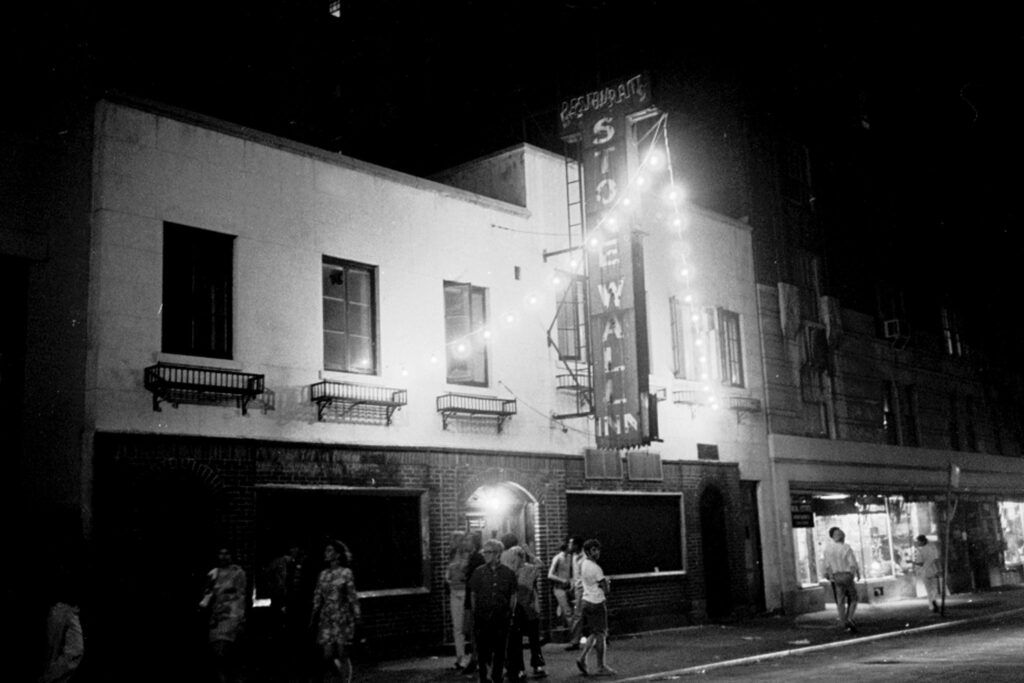
Pride started as a riot at the Stonewall Inn. During a routine police raid on the establishment, citizens fought back as patrons were arrested just for being in attendance. Christopher Park, across the street, was home to LGBTQ+ teens experiencing homelessness and a popular hangout for the community. That evening’s loiterers joined the fray, expanding the uprising. This spurred a week-long demonstration outside the Inn and sparked the decades-long gay liberation movement. As cultural approval shifted, gay pride marches became gay pride parades (Dolkart, et. al., 2017).
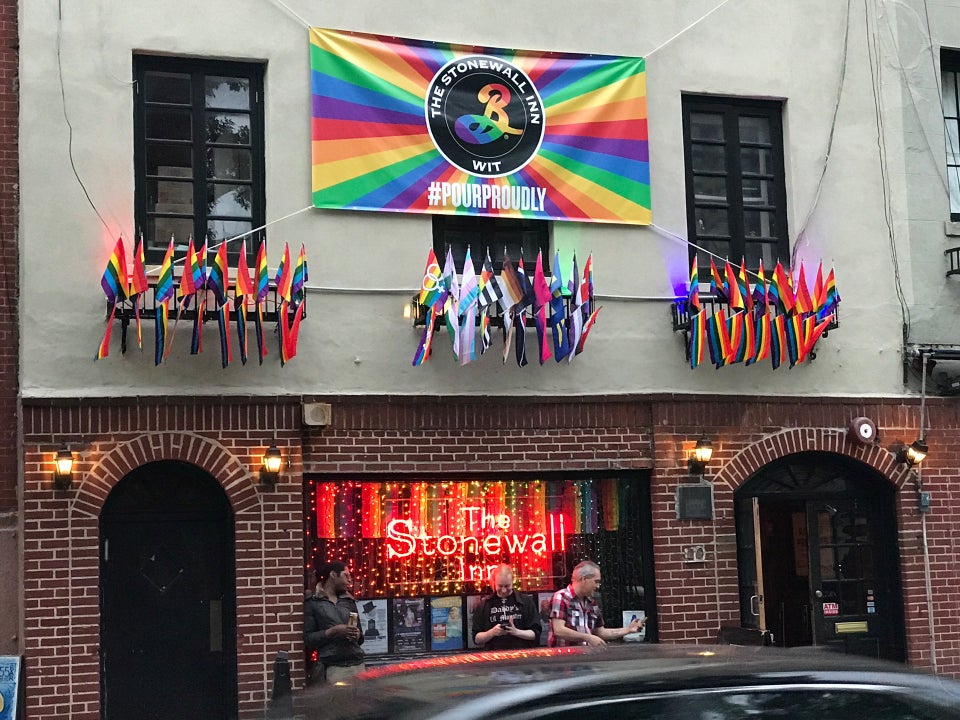
In 1989, New York City renamed the section of Christopher Street in front of The Stonewall Inn to Stonewall Place. Thanks to the efforts of the founders of the NYC LGBT Historic Sites Project, the city recognized Stonewall as a landmark in 1992. In 1999, Stonewall became the first LGBT site to be listed on the National Register of Historic Places and was named a National Historic Landmark in 2000. Stonewall became an official NYC landmark in 2015, and a New York State Historic Site and National Monument in 2016 (Dolkart, et. al., 2017).
The local, state, and federal recognition of Stonewall as historically significant allowed the LGBTQ+ community to feel safe and free to be themselves. It signaled that they would no longer be punished (on a municipal level) for expressing their love and gender. This progress backslid with the emergence of anti-transgender rhetoric and discrimination. Planners can carve out new safe spaces by dismantling gender barriers that protect all people, not only the LGBTQ+ community.
Inclusive Spaces for All Genders
Gender biases in the built environment play a direct role in reinforcing social and economic inequalities, perpetuating systemic oppression against women, girls, and gender minorities. Cities were made by and for white, cisgender, able-bodied men, and thus, cities are delineated along the lines of race and class. Not only are genders restricted culturally, but they also physically reinforce gender conformity and patriarchal gender roles. It is in silent oppression that both cisgender, heterosexual women and LGBTQ+ people are united. Sincere efforts toward gender inclusivity are important because they benefit everyone. (The World Bank, 2020)
Organizations that rely on public funding may hesitate to publicly defend transgender rights. The transgender community faces a considerable media problem–it is the new cultural boogeyman. Meaningful change is easier to perform when not under mass scrutiny. That’s why, in 2020, the United Kingdom kept its urban planning shifts for transgender equality quiet. If the media caught wind, it would have impeded advancement (Smith et. al., 2023). Fortunately, there are quieter ways to support all genders.
Subtle Signals for Gender Inclusion
- Adopt gender-neutral, ideally single-occupant, bathrooms. This will avoid altercations with people who may or may not pass in their gender expression.
- Name streets, parks, and buildings after prominent transgender figures. Such as Marsha P. Johnson Park in Williamsburg, Brooklyn.
- Investigate codes, design guidelines, and policies to correct any frameworks that are designed specifically for able-bodied, cisgender, heterosexual men (The World Bank, 2020).
- Train staff to use gender-inclusive language, like defaulting to “they/them” pronouns when unsure of how someone identifies, and saying “all genders” instead of specifying “men and women.”
Those wishing to learn more about gender-inclusive planning can read The World Bank’s 2020 Handbook for Gender-Inclusive Urban Planning Design. The guide highlights how to plan safe spaces for women and families, and includes LGBTQ+ planning protections in both urban and rural areas.
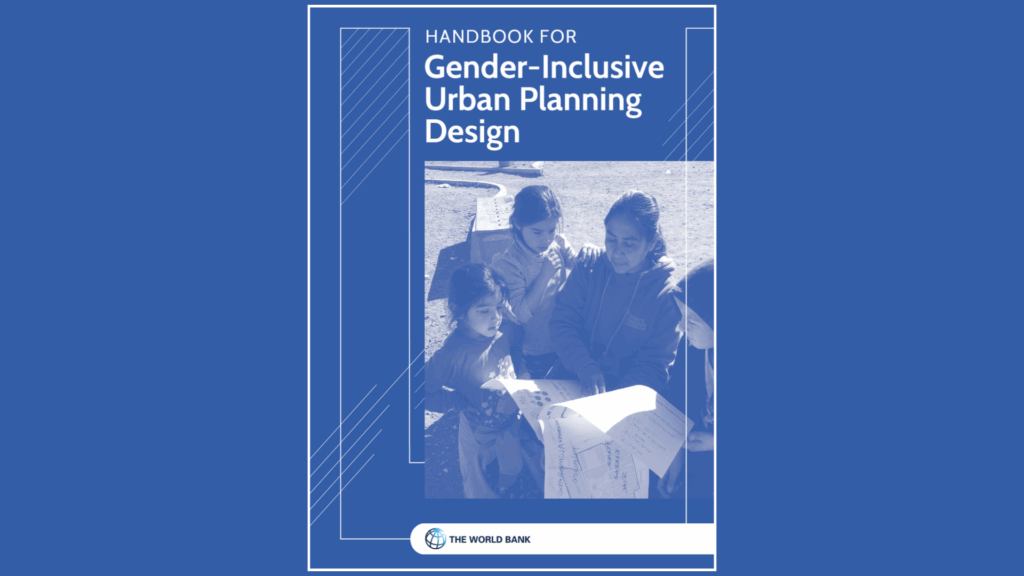
Use Land Equitably
LGBTQ+ people tend to flock to cities. There are cultural reasons, but inequitable land-use practices still bar Queer households from suburban and rural areas. For example, zoning ordinances determine the number of unrelated individuals who may share a household and whether they are considered a family. Typically, these rules are to limit student housing, reduce traffic, and ensure families move into homes built for families. But, until 2015, these zoning practices kept LGBTQ+ households away from entire neighborhoods, solidifying a heteronormative foundation where LGBTQ+ is unwelcome. (Forsyth, 2011)
Because of exclusionary zoning, LGBTQ+ people migrated to areas where they could live in relative peace (Forsyth, 2011). Cities like New York that built a culture of diversity became their cultural hub. With gay marriage opening up more options, people who want to leave the city, perhaps for somewhere more affordable, must sacrifice their historical place of belonging. This can be rectified by suburban and rural areas making an effort to welcome LGBTQ+ people. By making LGBTQ+ acceptance widely known, the queer dispersal could be less traumatic and cultivate new community hubs.
LGBTQ+ Displacement and Gentrification
Community migration isn’t always by choice. Now that LGBTQ+ people are less stigmatized, non-LGBTQ+ people have moved into their neighborhoods. This drives up prices, displacing lower-income LGBTQ+ people. LGBTQ+ communities are being pushed from their neighborhoods, and thus pushing others, in favor of wealthy people who want to live in the fun gayborhood with an active nightlife scene, creating a rippled effect that dissolves decades of culture. (James, 2017)
These structural problems can be corrected with a greater presence in government planning. This includes funding full-time jobs that represent these communities to the government and planning documents that capture the issues and the strategy to address them. In 2025, the City of Boston officially adopted a Department of LGBTQIA2S+ Advancement that empowers, protects, and promotes “the rights, dignity, and advancement of Boston’s LGBTQIA2S+ residents.” Rural areas tend to face budget challenges that might make funding an entire LGBTQ+ department untenable for an extended period of time. Regardless of the size of a community, incorporating queer voices at every planning stage is essential.
Zoning San Francisco’s LGBTQ Cultural Districts
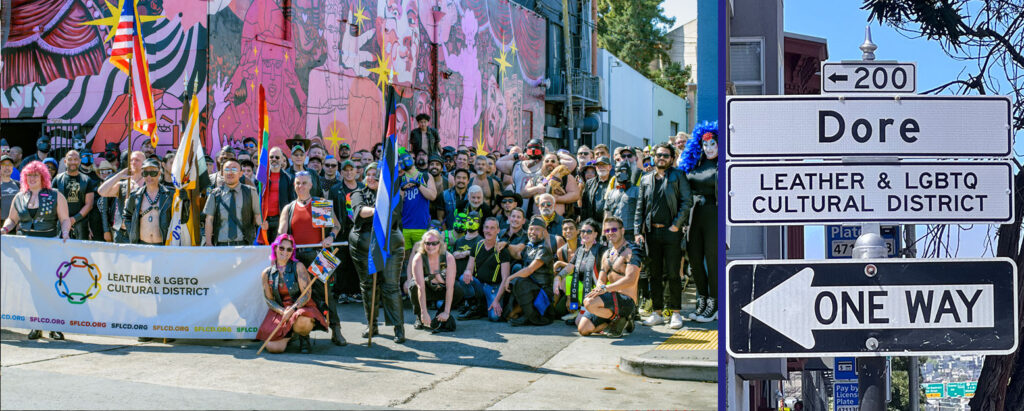
In San Francisco, California, Western SoMA (South of Market) committed to a Community Development Plan, titled “Recognizing, Protecting and Memorializing South of Market LGBTQ Social Heritage Neighborhood Resources” in 2011. The plan’s goal was to “recognize the living LGBTQ social heritage and fabric of this San Francisco neighborhood.” It recommended urban design, economic, and zoning programs to “leave an important legacy at the heart of the neighborhood.”
As part of the plan, the San Francisco Board of Supervisors established the world’s first Leather & LGBTQ Cultural District in 2018. The permanent art installation, “Leather Memoire” by Miller Company Landscape Artists, documents the district’s journey to acceptance. The district has become a hub of culture and commerce, feeding San Francisco’s economic development. This money is reinvested back into neighborhoods, making them healthy, happy, and thriving.
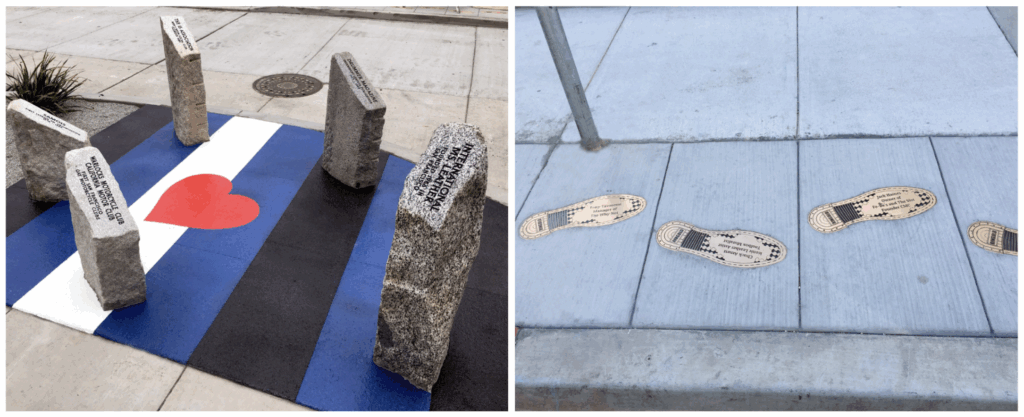
In Conclusion: Equitable Planning Is Not Easy
Pride is more than rainbows–it’s camaraderie, community safety, and economic development. Urban planners, public servants, and organizations can make LGBTQ+ communities proud of where they live by carving out a space for them to exist at ease; an environment where they can unmask, live authentically, and grow old.
Before alterations are made, the community’s diverse needs must be acknowledged and addressed. LGBTQ+ inclusion requires a dismantling of subconscious heteronormative planning practices to develop and protect “gayborhoods.” In the current political climate, these adjustments may be challenging. But the results will be worth it.
Public Works Partners Helps Organizations Develop Equitable Urban Spaces
We understand the importance of holistic urban planning that acknowledges and protects the marginalized experience. Our expertise lies in designing programs, policies, and places that work for each community. We practice Restorative Justice Planning—an approach that centers equity, repairs past harm, and empowers communities to shape their own futures. In Oklahoma City, we proudly lead a community-driven engagement process to help preserve two historic black landmarks: the Brockway Center and the Lyons-Luster Mansion. The collaborative partnership with AEA Consulting, Open Design Collective, and the Northeast Oklahoma City Legacy Builders transformed our feasibility study into a community-driven initiative, integrating restorative justice and trauma-informed methods to celebrate achievements and address past injustice. We reinvest this approach into all communities to build better neighborhoods.
Acknowledgements
Special thanks to Ben Demers, Economic Development Planner at the City of Somerville, and former Government Affairs Coordinator for the San Francisco LEATHER & LGBTQ Cultural District. His work with the LEATHER & LGBTQ Cultural District and LGBTQ Senior Housing Inc. greatly informed my research.
Additionally, thank you to Public Works Partners Manager, Aron Lesser, who offered his experience and education on trauma-informed care that sparked this journey through queer urban planning.
References
Woods, J. B. (2019). LGBT Identity and Crime. California Law Review, 105(3).
HRC Foundation. (n.d.). The lies and dangers of efforts to change sexual orientation or Gender Identity. Human Rights Campaign. https://www.hrc.org/resources/the-lies-and-dangers-of-reparative-therapy
Ortiz, Jacqueline A. (2023). Silence From the Great Communicator: The Early Years of the AIDS Epidemic Under the Reagan Administration. Swarthmore Undergraduate History Journal: 4 (2), 76-99. 10.24968/ 2693-244X.4.2.6 https://works.swarthmore.edu/suhj/vol4/iss2/6
Dolkart, A. S., Shockley, J., & Lustbader, K. (2021, June). Stonewall Inn. NYC LGBT Historic Sites Project. https://www.nyclgbtsites.org/site/stonewall-inn-christopher-park/
World Bank Group. (2020, February 20). Handbook for Gender-Inclusive Urban Planning and Design. World Bank. https://www.worldbank.org/en/topic/urbandevelopment/publication/handbook-for-gender-inclusive-urban-planning-and-design
Smith, M., Gilchrist, P., & Lim, J. (2023). Planning in the “LGBTQ Capital”: Choreographing Transgender In and Out of Policy. Urban Planning, 8(2), 197-207. https://doi.org/10.17645/up.v8i2.6321
James, S. (2017, June 21). There Goes The Gayborhood. New York Times. https://www.nytimes.com/2017/06/21/us/gay-pride-lgbtq-gayborhood.html
Fiveable. (2024, July 31). Regional pride – (Appalachian Studies). Fiveable. https://library.fiveable.me/key-terms/hs-appalachian-studies/regional-pride
GILDEAD. (n.d.) State of the HIV Epidemic: SUBSTANTIAL PROGRESS AND THE CHALLENGES THAT REMAIN. GILEAD | HIV. https://www.gileadhiv.com/landscape/state-of-epidemic/
Murib, Z. (2025, April 7). Why Are Trans People Such an Easy Political Target? This Crisis Was Decades in the Making. Slate. https://slate.com/news-and-politics/2025/04/donald-trump-trans-gay-lgbtq-history.html
Smith, C. (2020, June 30). Despite racial marginalization, Black transgender women “at the front” of the LGBT movement. The Hawk Newspaper. https://sjuhawknews.com/19187/features/despite-racial-marginalization-black-transgender-women-at-the-front-of-the-lgbt-movement/
Logie, C. H., & Rwigema, M. J. (2014). “The normative idea of queer is a white person”: understanding perceptions of white privilege among lesbian, bisexual, and queer women of color in Toronto, Canada. Journal of lesbian studies, 18(2), 174–191. https://doi.org/10.1080/10894160.2014.849165
Forsyth, A. (2011). Queerying Planning Practice: Understanding Non-Conformist Populations. In P. L. Doan, Queerying Planning: Challenging Heteronormative Assumptions and Reframing Planning Practice (pp.33-65). Routledge.
